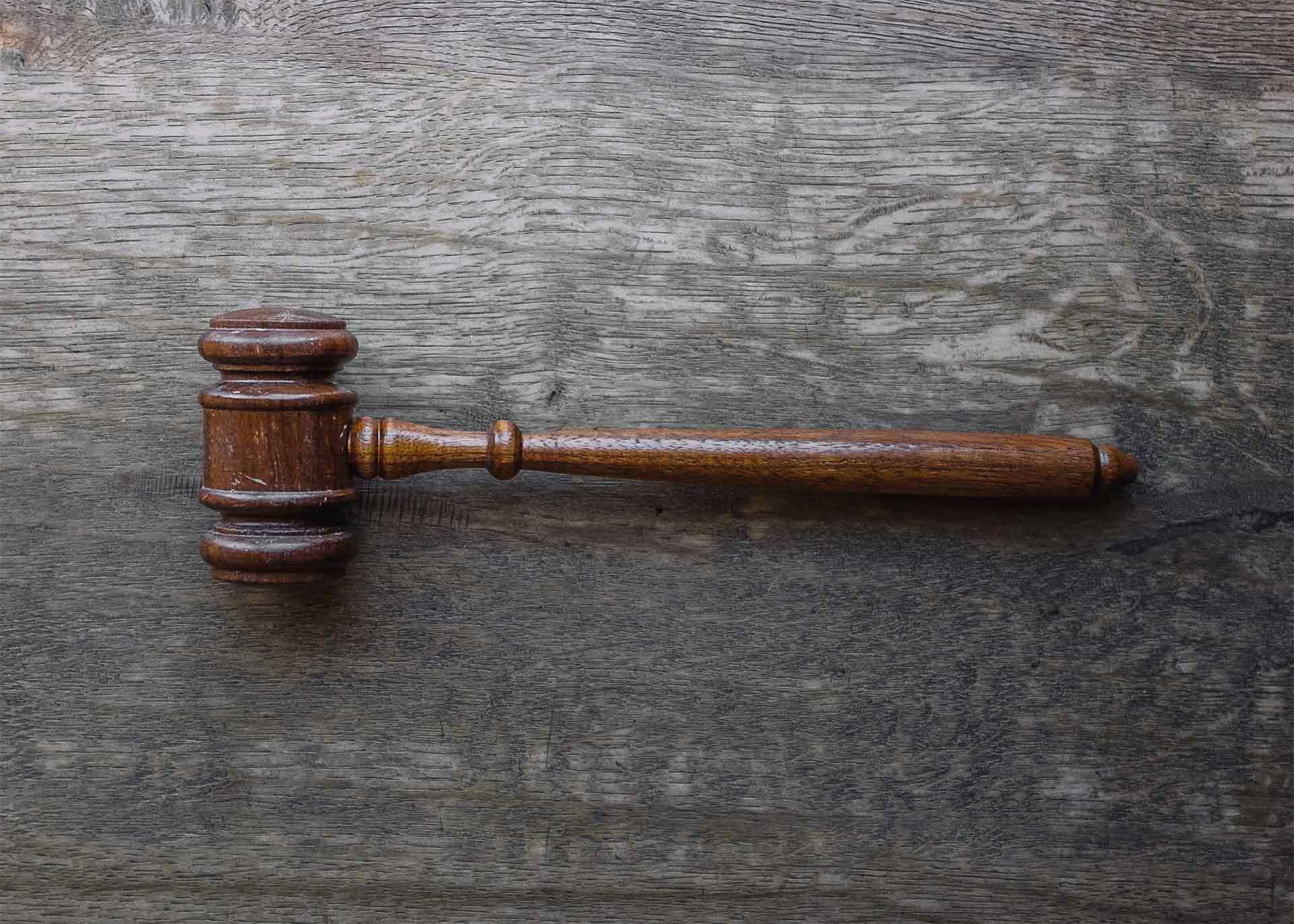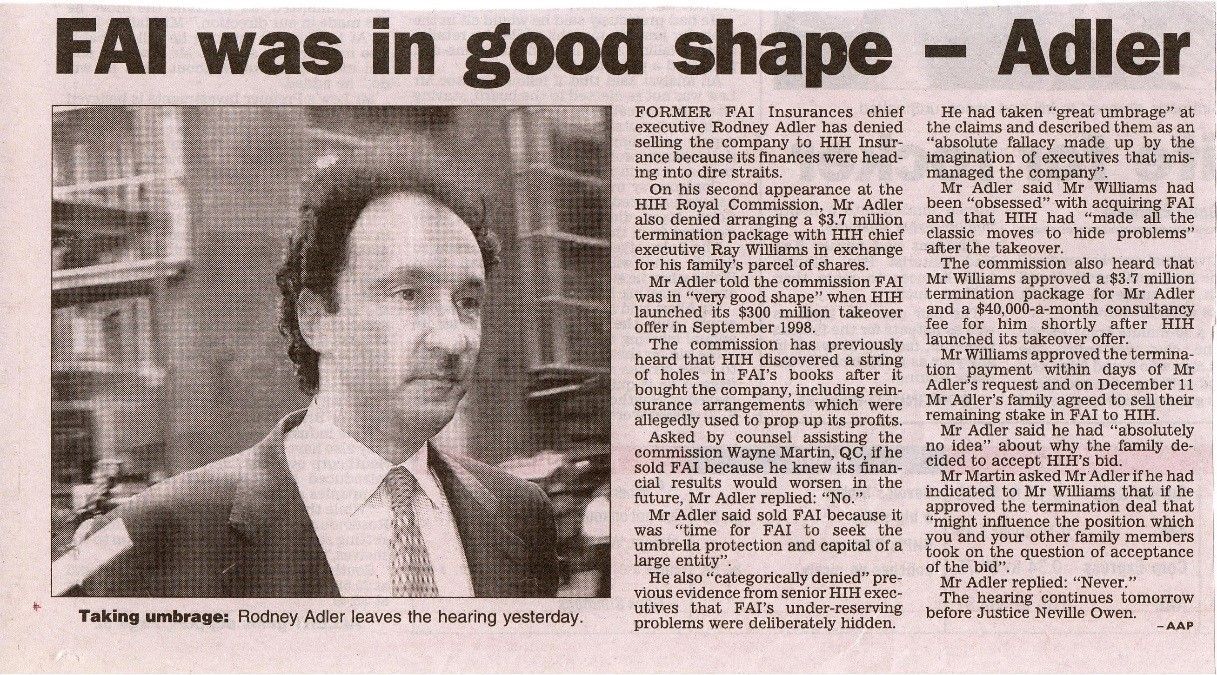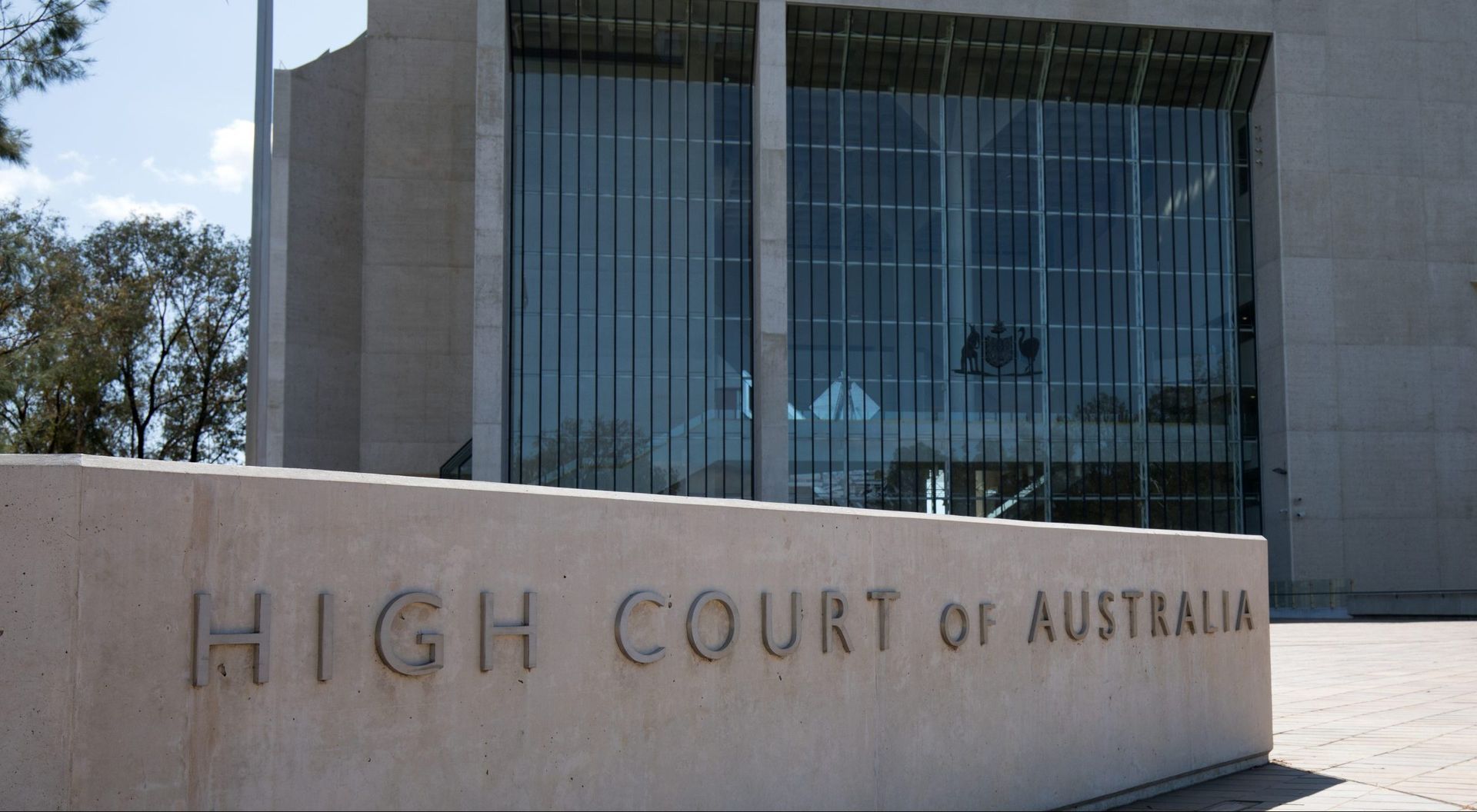Tax Gross-Up on Claims for Damages & Compensation
What is meant by a tax gross-up and its contraversial use by forensic accountants?
Claims for damages and compensation quantifying loss of profit presented by an expert can include an amount referred to as a tax 'gross-up'. For claimants who are an Australian company, the tax gross-up can be as high as 30% of the total claimed as damages or compensation. This article explores the tax considerations behind the applicability of a tax gross-up and the rate at which the tax gross-up should be based.
Mathematically, imagine:
1. a company claiming damages or compensation in the amount of $7 million for loss of profit quantified by a forensic accounting expert; and
2. the tax gross-up amount of $3 million, which is simply the calculated damages amount of $7 million, divided by 1 minus the tax rate, which is 30% for large Australian companies.
A tax gross-up comprising up to 30% of the total damages claim, is a material amount in the context of any sized calculation of damages! Often, the forensic accountant expert's report quantifying the damages will dedicate scores of pages (maybe hundreds of pages) to explaining how the $7 million damages amount has been quantified. Yet, the only explanation by the expert for the $3 million tax gross-up could be something along the lines of the following "Damages amount will be subject to tax on receipt of the amount claimed as damages or compensation".
At the risk of stating the obvious, this is generally not a satisfactory explanation for the calculation (i.e. the calculated damages amount divided by 1 minus the tax rate). Rather, it is simply two assumptions made by the forensic accounting expert: income tax is payable on receipt of an award of compensation or damages and the tax rate that would be applicable on the award of compensation or damages.
What is the implied justification for calculating a tax gross-up (assuming not explicit)?
As a general statement, the net profits of a business operating in Australia are subject to tax. In more precise and technical terms, the net profits of a business will form part of the taxpaying entity's 'ordinary income' under section 6-5 of the Income Tax Assessment Act 1997 (Cth) ("ITAA").
The terms 'ordinary income' and income according to 'ordinary concepts' used in section 6-5 of ITAA are not defined anywhere in the ITAA. These terms are subject to a very long list of case law in Australia which establishes legal principles to determine whether a particular receipt is considered 'income' or 'capital' in nature.
A common analogy used in tax cases considered by Australian tribunals and courts is that of a tree bearing fruit. If the character of the receipt in the hands of a taxpayer relates to the tree, then it will be considered on 'capital account', whereas if the character of the receipt relates to the fruit, then it will be considered on 'income account'. This analogy, while appearing overly simplistic, is worth bearing in mind when it comes to considering the tax consequences associated with a potential award of damages or compensation.
Tax practitioners (lawyers and accountants) will agree, as a matter of legal principle, that the receipts generated by a taxpayer from the normal carrying on of a business activity in Australia are 'ordinary income'. Where damages are paid for something pertaining to income (i.e. business profit), the damages will be assessed as ordinary income with many Australian tax cases supporting this principle[1]. Therefore some forensic accountants will assume that damages or compensation which is based on a calculation of loss of profit will be taxable when received by a claimant and apply a tax gross-up to a calculated damages amount.
A forensic accountant's assumptions on the applicability of a tax gross-up may be incorrect where the damages amount is considered capital in nature, and the following are a handful of many tax cases in which the Australian courts considered the damages award or compensation receipt to be 'capital' in nature[2]:
1. damages paid for the loss of a taxpayer's profit-making structure - Case Y24 91 ATC 268;
2. damage to goodwill - FC of T v. Spedley Securities Limited (1988) 19 ATR 938
3. payments received by a person for loss of earning capacity - Atlas Tiles v Briers (1978) 144 CLR 202;
4. payments received in consideration of restrictions on his/her future income-earning capacity - Higgs v Olivier (1952) TC 137; and
5. lump-sum damages received in settlement of an unliquidated claim covering both income and capital elements, which cannot be dissected into those elements- McLaurin v FCT (1961) 104 CLR 381.
If the receipt of an award of damages or compensation reflects something that is of a capital nature, further consideration is then required as to the applicability of Capital Gains Tax ("CGT") in Australia, which seeks to tax specific types of capital gains as a form a statutory income under the ITAA. While there is certainty regarding the tax treatment in respect of personal injury compensation awards or settlements (which is an exempt CGT asset and not taxable[3]), there can be much greater uncertainty with claims for damages or compensation outside of this specific area of legal practice focused on negligence compensation.
The key point here is that the fundamental distinction between whether damages or compensation reflects income or capital (or a combination of both) is important because CGT does not capture all types of capital gains and the tax payable may be different if the receipt does attract CGT due to concessional CGT treatment. Therefore, great care is required by the expert forensic accountant, in assuming a tax gross-up is appropriate as a matter of tax law principle and if so what gross-up amount should be included in the damages or compensation quantification exercise.
The danger in making assumptions about tax without knowledge of tax law
The value of a business is, theoretically, a function of the expected future returns and risk. Value for a going concern business can be calculated, practically, as the expected future after-tax cash flow (with the proxy being net profit) into perpetuity, discounted using an after-tax discount rate, to arrive at a lump sum capital amount at a point in time. Forensic accountants tasked with the exercise of quantifying damages or compensation, often import discounted cash flow valuation principles into a calculation of loss of profit, which is how the lexicon of 'loss of profit' frequently enters the domain of damages estimation and quantification. It is a term used by lawyers and other experts and is considered by arbitrators and judges in a final hearing.
It is relevant to highlight that while opposing forensic accountants may refer to their calculations contained in their expert reports as 'loss of profits' suffered by a business, the quantification exercise, which seeks to measure the after-tax profits, that have been/will be lost by the business, does not necessarily mean that a court's award of damages or compensation (or a financial settlement is reached between the parties) will be ordinary income. That is, how the forensic accounting expert(s) characterises the nature of the amount quantified (typically as a 'loss of profit'), is not determinative of the tax consequences assuming the award is made by a court, or a financial settlement is reached between the parties.
It is also worth highlighting how a solicitor's firm pleads its client's case in respect of the claim for damages or compensation is also not determinative of the tax treatment, although the pleadings may be informative as it will outline the specific cause(s) of action and particularise the remedy (including whether it is damages or an account of profits). A court's judgment, which will consider the relevant matrix of facts leading up to the decision and an award of damages or compensation may be decisive from the perspective of how the damages or compensation amount should be taxed, if at all, where it is not agreed between adversarial parties.
The Australian Taxation Office ("ATO") may have a public view on how a particular award of damages or compensation should be treated for tax purposes. The ATO issues rulings and determinations that set out the ATO's views and bind the ATO to those published views. However, the rulings and determinations issued by the ATO, do not establish law and there are examples of the ATO withdrawing its rulings and determinations as a result of an Australian court establishing law that is inconsistent with what the ATO has previously published in a ruling or determination. Furthermore, taxpayers can challenge the ATO's views published in a ruling or determination and convince a tribunal or court that the taxpayer's alternative view, based on a unique set of facts, is appropriate. It is important to recognise that the ATO's views set out in its binding rulings and determinations are akin to lifesaving flags at an Australian beach – if you swim outside the 'red and yellow' flags, you put yourself at greater risk, but it does not mean it will be fatal to do so.
Unsettled tax law involving compulsory acquisition of a leasehold interest
Compensation for the compulsory acquisition of an interest in land by an acquiring authority (usually a government department or agency) is typically found within sections of a particular statute. The relevant statute will provide for compensation for a range of express items, but the express items are not always drafted as 'loss of profits'. Notwithstanding this, 'loss of profits' is frequently quantified by forensic accounting experts and claimed as compensation for the compulsory acquisition of the land.
While Australian courts often decide on the merits of claims comprising loss of profits in the compulsory acquisition of land matters, unfortunately, there is little jurisprudence about tax treatment of the heads of compensation calculated by reference to loss of profits.
Many companies operating a business will occupy business premises under leasehold interest. If the company has to stop business trading or reduce its business trading, which can be proven to be caused following an announcement of a compulsory acquisition, that company will likely seek to claim the actual and/or expected loss of profit as compensation.
Let's assume that an acquiring authority agrees to pay some lesser amount for 'loss of profit' to acquire the leasehold interest held by the company. Will the compensation received by this company, for the surrender of the lease, be considered as 'income' or 'capital' for tax purposes? The High Court of Australia considered the tax character of a lease surrender payment and said the following:
"A lease surrender receipt of a lessee for the surrender of a lease which occurs as a singular transaction (other than one that occurs as an ordinary incident of business activity) would not constitute assessable income unless the transaction involved a business operation, commercial operation or adventure in the nature of trade"[4]
The ATO has since adopted legal principles from the above tax matter publishing Taxation Ruling TR2005/6 – Income Tax: Lease Surrender Lease Payments and Receipts. Assuming a lease surrender payment is on capital account, consideration may be given to potential CGT consequences. On this issue, the ATO has issued a ruling dealing with compensation and CGT called Taxation Ruling TR95/35 – Income Tax: Capital Gains: Treatment of Compensation Receipts. The spirit of this (TR95/35) ruling is that the ATO will adopt a 'look through approach' to determine the most relevant underlying asset which is the subject of the compensation receipt. It may be argued, based on the relevant facts, that the underlying asset which is the subject of the compensation award is a leasehold interest. Relevantly, section 108.5 of ITAA specifically includes a leasehold interest in land as a CGT asset and section 124.70 of the ITAA provides CGT 'roll-over relief' in relation to any CGT asset that has been compulsorily acquired by an Australian government agency, effectively meaning that no CGT or income tax could be payable.
Seek independent tax advice
Recently, I was involved in a New South Wales court-litigated compulsory acquisition of land involving Sydney Metro's acquisition of a leasehold interest by an individual conducting a business. A corporate 30% tax rate was applied and a tax gross-up (of 30%) was calculated by the forensic accounting expert on behalf of the business owner and included in the compensation claim. There was no satisfactory rationale stated for the 30% tax rate and tax-gross-up assumption adopted. The barrister for the business owner submitted to the court and relied on ATO Class Ruling 2020/15 and Class Ruling 2020/16 in support of the gross-up calculated.
Paragraph 31 of these Class Rulings stated that compensation by Sydney Metro could include loss of profits and paragraph 9 of these rulings stated that the ATO would assess compensation for such loss of profit as 'ordinary income'. In this matter, the court did not award any loss of profits, so the court did not have to consider the proper characterisation of the compensation which would inform on potential tax consequences and therefore applicability, if any, of a tax gross-up.
The lesson for forensic accountants to heed is that even if the court did award a loss of profit, the 30% tax gross-up was something that was contested and the business owner did not seek to rely on any independent tax opinion that could have supported the forensic accountant's tax calculations and tax gross-up. If forensic accountants, who are usually experts in quantification of loss of profit, have insufficient knowledge of tax law, they should not assume without further thought that a calculation of loss of profits if awarded would be taxable as income and they should encourage the claimant to obtain an independent tax opinion to support the forensic accountants claim.
Endnotes
[1] Credit to Andrew Ryder, Barrister-in-NSW, for identification of the following cases: compensation paid to a farmer for lost trading income - Gill v Australian Wheat Board [1982] NSWLR 795, damages awarded to a landlord for lost rental income- Raja's Commercial College v Gian Singh & Co [1976] 2 All ER 801, and damages for lost company profits- Liftronic Pty Ltd v FCT 96 ATC 4425.
[2] Also credit to Andrew Ryder, Barrister-in-NSW for identification of these cases.
[3] Section 118.37 of the ITAA.
[4] Paragraph 106, FCT v Montgomery (1999) 198 CLR 639
Leave a Comment:
SEARCH ARTICLE:
SHARE POST:
RECENT ARTICLE:











